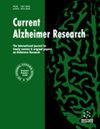一个土耳其家庭的临床和分子发现,该家庭在PSEN1基因中有一个(c.879-1G>a)剪接变体,罕见情况:变体阿尔茨海默病伴痉挛性麻痹。
IF 1.9
4区 医学
Q3 CLINICAL NEUROLOGY
引用次数: 3
摘要
背景早发性阿尔茨海默病(EOAD)通常诊断为发病年龄早于65岁,占所有阿尔茨海默病(AD)病例的5-10%。迄今为止,尽管只有10-15%的家族性EOAD病例得到了解释,但绝大多数病例的遗传原因尚未得到解释。变异性阿尔茨海默病伴痉挛性轻瘫(varAD)被定义为一种罕见的临床实体,其特征是早发性痴呆、下肢痉挛和步态障碍。尽管该疾病最初与PSEN1基因外显子9的变异有关,但后来发现其他外显子的变异也与该疾病有关。目的本研究旨在提高人们对varAD的认识,varAD是一种罕见的表型,由PSEN1的致病性变异引起。此外,我们旨在评估迄今为止发现的varAD患者的突变谱。方法记录详细的家族史和临床资料。进行全外显子组测序,并通过Sanger测序对该家族进行共分离分析。此外,对文献中分子确诊的(varAD)患者进行了综述。结果我们在PSEN1基因中发现了一个杂合剪接变异体(c.869-1G>a),在一个有两个varAD患者的家族中。我们报告了受影响个体的临床和遗传学发现。结论我们提供了一名土耳其诊断为varAD患者的详细临床和基因图谱,以及文献中的受试者。总之,我们认为(c.869-1G>A)变体的临床特征和作用将有助于我们理解PSEN1基因在AD发病机制中的作用。本文章由计算机程序翻译,如有差异,请以英文原文为准。
Clinical and Molecular Findings in a Turkish Family Who Had a (c.879-1G>A) Splicing Variant in PSEN1 Gene with A Rare Condition: The Variant Alzheimer's Disease with Spastic Paraparesis.
BACKGROUND
Early-onset Alzheimer's disease (EOAD) is commonly diagnosed with an onset age of earlier than 65 years and accounts for 5-10% of all Alzheimer's disease (AD) cases. To date, although only 10-15% of familial EOAD cases have been explained, the genetic cause of the vast proportion of cases has not been explained. The variant Alzheimer's disease with spastic paraparesis (varAD) is defined as a rare clinical entity characterized by early-onset dementia, spasticity of the lower extremities and gait disturbance. Although the disease was first associated with variants in exon 9 of the PSEN1 gene, it was later shown that variations in other exons were also responsible for the disease.
OBJECTIVE
The current study aims to raise awareness of varAD which occurs as a rare phenotype due to pathogenic variants in PSEN1. In addition, we aimed to evaluate the spectrum of mutations in varAD patients identified to date.
METHODS
Detailed family histories and clinical data were recorded. Whole exome sequencing was performed and co-segregation analysis of the family was done by Sanger sequencing. Also, review of the molecularly confirmed patients with (varAD) from the literature was evaluated.
RESULTS
We identified a heterozygous splicing variant (c.869-1G>A) in the PSEN1 gene, in a family with two affected individuals who present with varAD. We reported the clinical and genetic findings from the affected individuals.
CONCLUSION
We present the detailed clinical and genetic profiles of a Turkish patient with diagnosis of varAD together with subjects from the literature. Together, we think that the clinical characteristics and the effect of the (c.869-1G>A) variant will facilitate our understanding of the PSEN1 gene in AD pathogenesis.
求助全文
通过发布文献求助,成功后即可免费获取论文全文。
去求助
来源期刊

Current Alzheimer research
医学-神经科学
CiteScore
4.00
自引率
4.80%
发文量
64
审稿时长
4-8 weeks
期刊介绍:
Current Alzheimer Research publishes peer-reviewed frontier review, research, drug clinical trial studies and letter articles on all areas of Alzheimer’s disease. This multidisciplinary journal will help in understanding the neurobiology, genetics, pathogenesis, and treatment strategies of Alzheimer’s disease. The journal publishes objective reviews written by experts and leaders actively engaged in research using cellular, molecular, and animal models. The journal also covers original articles on recent research in fast emerging areas of molecular diagnostics, brain imaging, drug development and discovery, and clinical aspects of Alzheimer’s disease. Manuscripts are encouraged that relate to the synergistic mechanism of Alzheimer''s disease with other dementia and neurodegenerative disorders. Book reviews, meeting reports and letters-to-the-editor are also published. The journal is essential reading for researchers, educators and physicians with interest in age-related dementia and Alzheimer’s disease. Current Alzheimer Research provides a comprehensive ''bird''s-eye view'' of the current state of Alzheimer''s research for neuroscientists, clinicians, health science planners, granting, caregivers and families of this devastating disease.
 求助内容:
求助内容: 应助结果提醒方式:
应助结果提醒方式:


